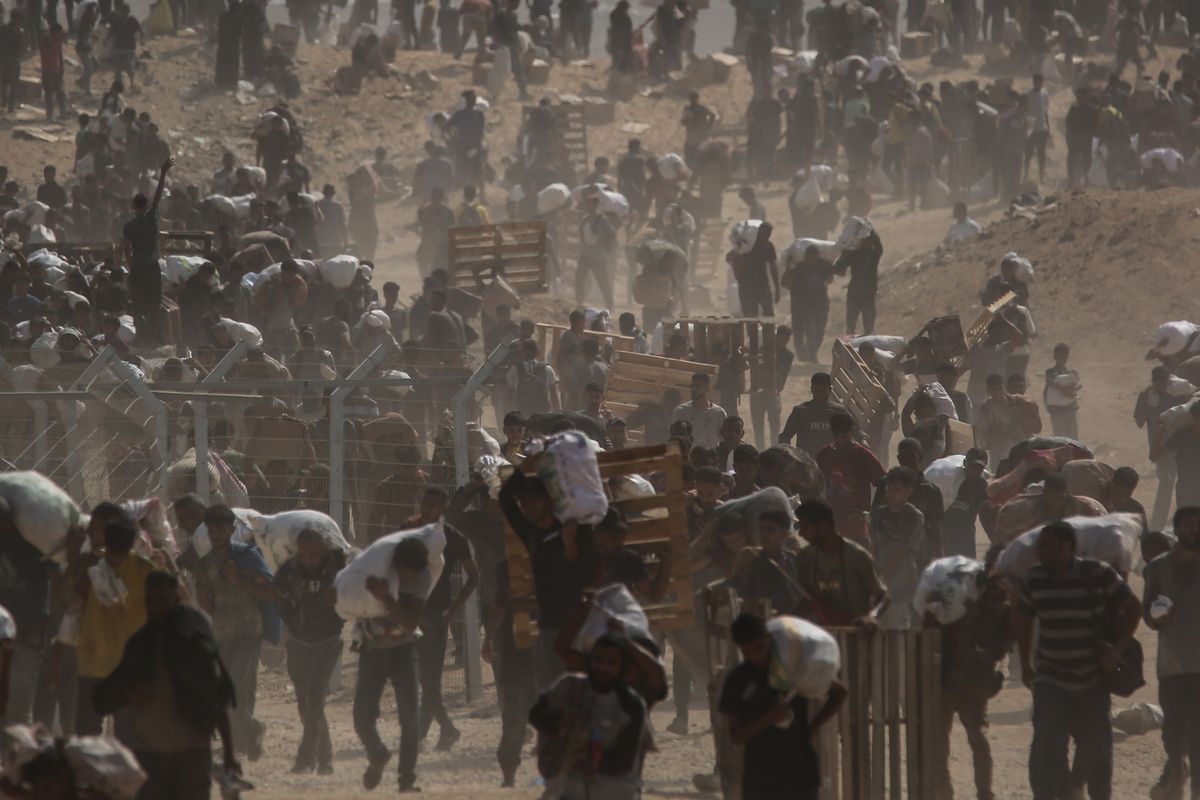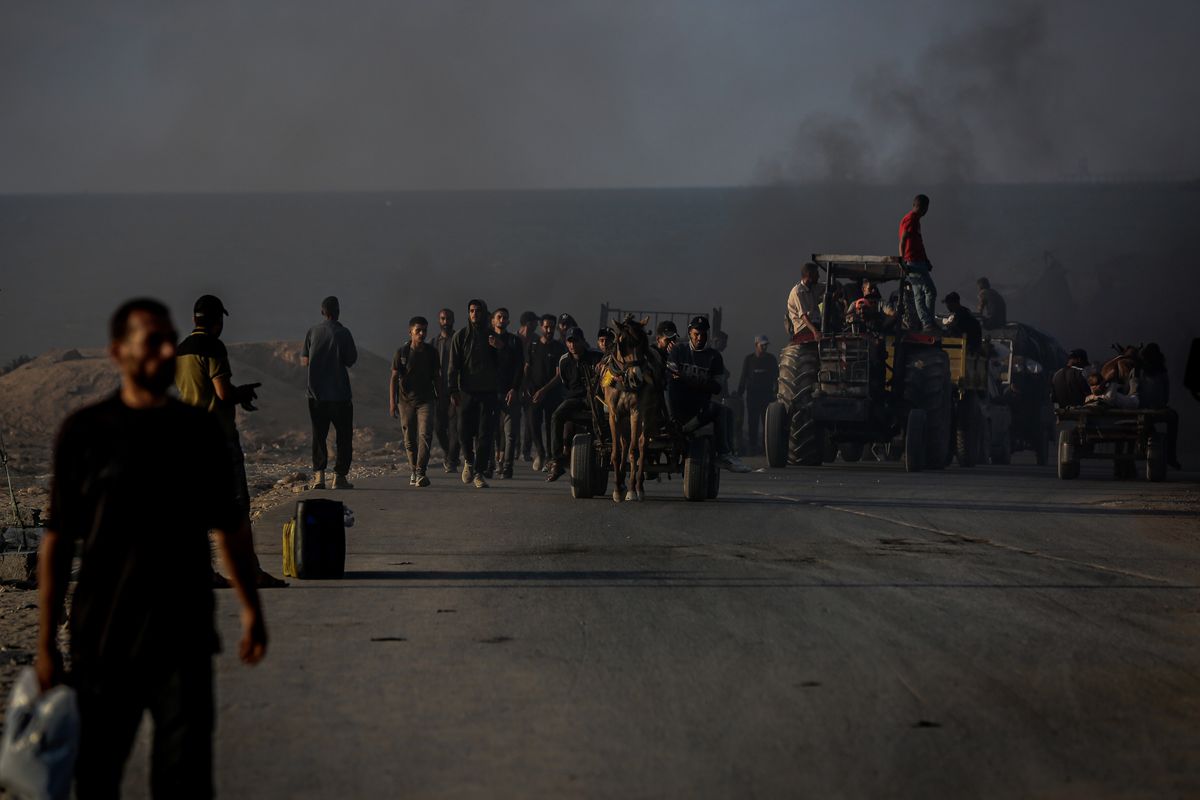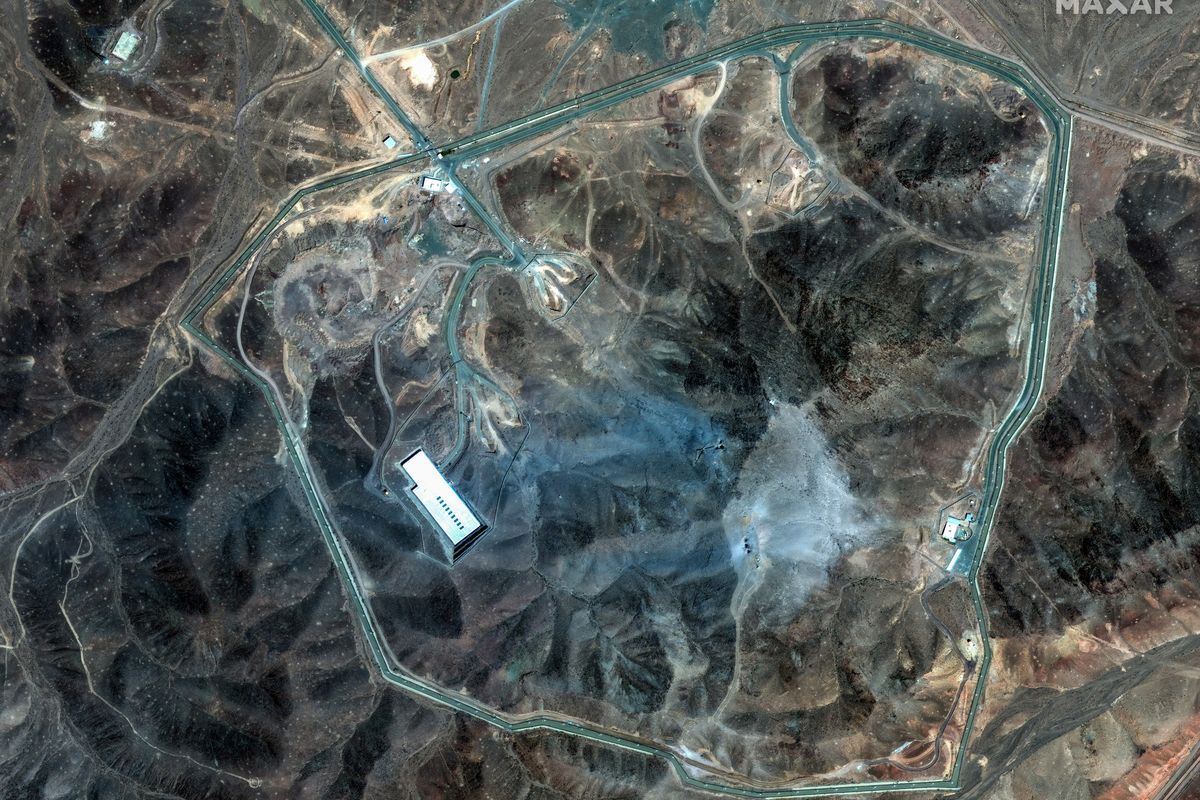SUBSCRIBER+REPORTING – The U.S. carried out a barrage of airstrikes against more than 85 targets in Iraq and Syria on Friday, shortly after the bodies of three U.S. service members killed earlier this week in Jordan, were returned to Dover Air Force Base in Delaware.
The U.S. military said its strikes lasted 30 minutes and hit targets linked to Iran's Revolutionary Guard Corps (IRGC) and the militias they support–groups that have claimed responsibility for more than 150 attacks on U.S. forces since Israel’s invasion of Gaza last October. One of those groups, an umbrella organization known as the Islamic Resistance of Iraq, said it carried out the January 28 attack on the U.S. base known as Tower 22.
“The United States does not seek conflict in the Middle East or anywhere else in the world,” President Joe Biden said in a statement. “But let all those who might seek to do us harm know this: If you harm an American, we will respond.”
Friday’s targets included IRGC command and control centers, rockets, missiles and drone storage facilities, as well as logistics and munition supply chain facilities, according to the U.S. military. It also said B-1 bomber planes had been among the aircraft used in the strikes.
“What’s impressive here is the volume and diversity of the instruments used by the U.S., particularly the deployment of the B-1 bomber, which can put 16 2000-pound bombs on 16 separate targets with laser-like precision,” John McLaughlin, former acting director of the CIA told The Cipher Brief. “It’s probably more than Iran was expecting.”
General Philip Breedlove (Ret.), described the response as “fairly robust” but also “late.”
“My first impression is that we're late. We should have struck quicker,” General Breedlove told The Cipher Brief. As for the strikes themselves, he added, “Let's find out what the administration has done. There's a lot of, as Clausewitz says, fog and friction right now, and we need to find out what they actually hit.”
And it may not be over yet. U.S. officials, including Defense Secretary Lloyd Austin, said earlier in the week, that retaliation for the attack in Jordan would take the form of a “multi-tiered” response.
Steering clear of Iran
The U.S. strikes appeared carefully calibrated to meet seemingly contradictory aims: a response strong enough to deter Iran and its proxy militias from carrying out further attacks against Americans, while mild enough to avoid inviting a major Iranian response that might lead to a full-blown U.S.-Iran war.
“What is clear is that they have not hit inside Iran,” General Breedlove said. “What is also clear is that, if we're going to message Iran, we need to hit things that they hold dear. That doesn't necessarily have to be in Iran…All roads start in Iran and all roads lead back to Iran, and we're going to have to strike targets that are commensurate with things they value dearly in order to send that message to them.”
In the aftermath of the attack in Jordan at a facility known as Tower 22, U.S. officials from the president on down had hinted at the dilemma. While President Biden vowed to avenge the deaths of the three Americans and blamed Iran for supplying the weapons used in the attacks, he also said the U.S. does not seek a “wider war in the Middle East.”
Clearly fearing a major U.S. response, the government in Tehran seemed at pains throughout the week to suggest it was backing off, and ordering at least some of its proxy groups to do the same.
Iranian Revolutionary Guards Commander Hossein Salami vowed Tuesday to respond to any U.S. attack on Iran, but said his country was “not looking for war.” And while Iran said it had no advance knowledge of the Tower 22 attack, a group calling itself Kataib Hezbollah, part of the organization that claimed responsibility for the attack, said it was suspending all military operations against U.S. forces.
Iran also said earlier in the week, that it had pulled members of the IRGC out of Syria, a move that may have had the dual effect of lowering tensions but also lowering the chance that Iran would lose valuable operatives when the U.S. retaliation came.
Will Iran respond to the Friday strikes?
McLaughlin believes there will be a response, “but I would not expect it to be massive. I do think the Ayatollah [Supreme Leader Ali Khamenei] wants to avoid a direct war with the United States, and will not want to bring that possibility closer.”
“The Iranian response is most likely to be rhetorical,” Norm Roule, former National Intelligence Manager for Iran at the Office of the Director of National Intelligence, told The Cipher Brief. “We should expect Iranian officials to bolster their air defenses, to make a number of bellicose statements,” but little more than that. Roule warned that U.S. forces in the region could now be at greater risk of attack, and suggested – as others have recently – that the U.S. consider withdrawing its forces from Iraq and Syria.
“We should absolutely pull out from the Iraq area of operations and consider how they might use the Yemenis or the Lebanese Hezbollah or other actors” to attack American targets.
The Iranian government did not comment Friday on the attacks. Reuters reported that Syrian state media said an "American aggression" on sites in desert communities in Syria had resulted in a number of casualties.
The “multi-tiered response”
Secretary of Defense Lloyd Austin had telegraphed the breadth of the retaliatory strikes.
“They (the Iranians) have a lot of capability. I have a lot more,” Austin said Thursday. “We will have a multi-tiered response, and ... we have the ability to respond a number of times depending on what the situation is.”
Several reports suggested the Pentagon had approved plans for strikes on multiple militant camps, including “Iranian personnel and facilities” supporting militia groups based in Syria and Iraq.
In his statement Friday, Biden himself said, “Our response began today. It will continue at times and places of our choosing.”
Read more expert-driven national security insights, perspective and analysis in The Cipher Brief because National Security is Everyone’s Business.













